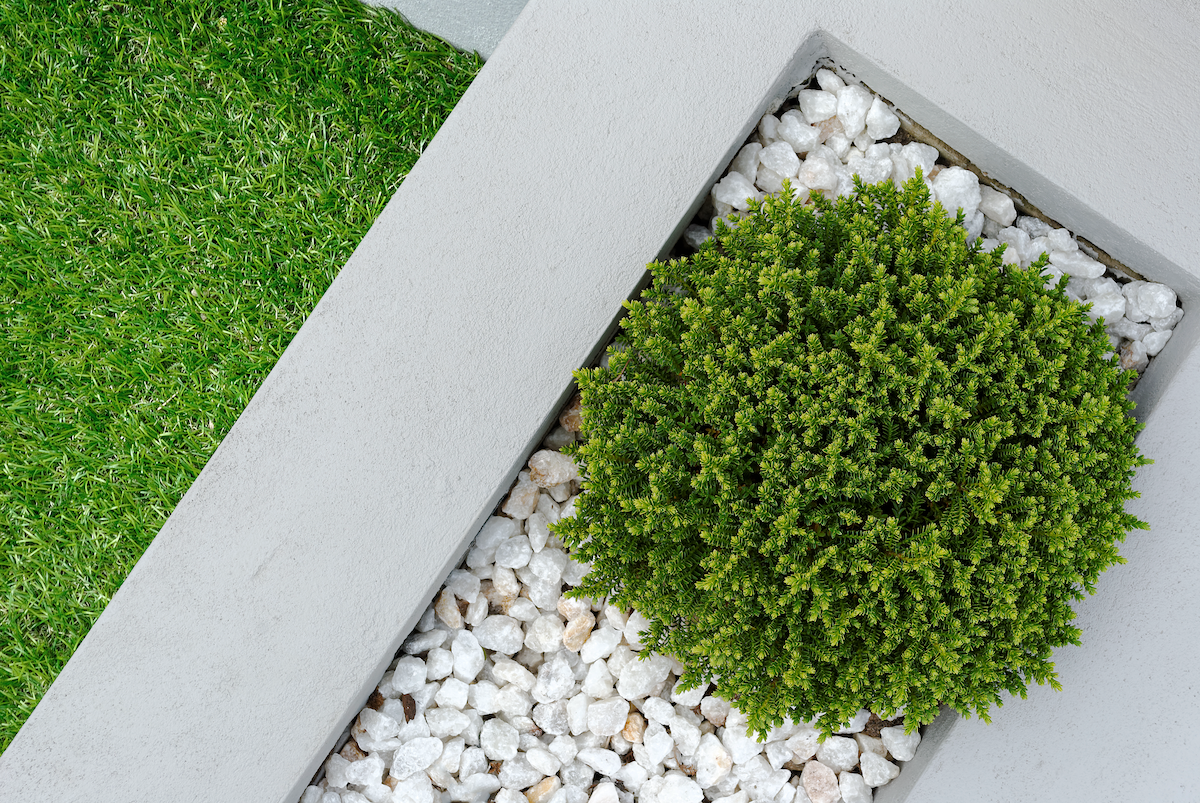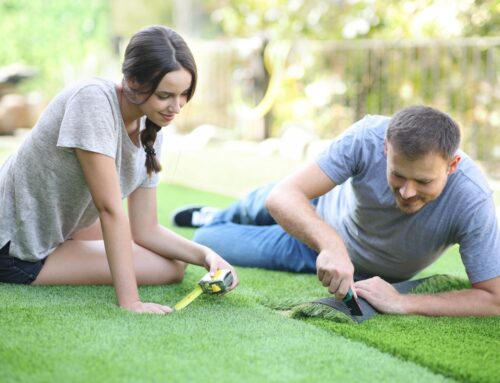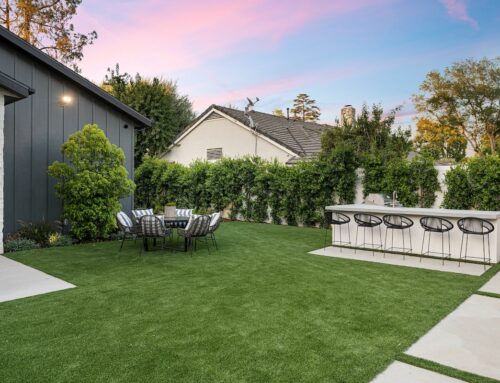Last Updated on June 12, 2023 by ReTurf
Artificial Grass: A Primer
Before diving into the specifics of recycled vs reused artificial grass, it’s important to understand what artificial grass is.
Artificial grass, also known as synthetic turf (or more colloquially as “fake grass”) is a surface of synthetic fibers designed to mimic natural grass. It’s commonly used in the building of stadiums and arenas for sports that were originally played on grass. It’s also become a popular choice for commercial and residential landscaping—especially where the maintenance of natural grass is impractical, costly, or simply a hassle the property owner would rather not deal with.

Many people mistakenly use the terms “recycled artificial grass” and “used artificial grass” interchangeably. When people search for used artificial turf, they often refer to it as recycled, when in reality, it’s actually being reused.
Used vs Recycled Artificial Grass
Contrary to popular belief, the process of recycling artificial grass and reusing artificial grass are not the same thing. Recycling refers to the process of breaking something down into its base materials, so they can be processed and reused in the production of new products. Reusing (or repurposing) artificial grass refers to the practice of reusing used artificial turf in a different location or for a different purpose, without undergoing the recycling process.
Artificial turf, much like a layered cake, consists of multiple strata, each serving a unique purpose. The top layer, mimicking natural grass blades, is typically made from plastic fibers like polyethylene, polypropylene, or nylon. Underneath lie layers designed to secure the grass threads and fortify the turf’s durability, often composed of plastics such as urethane.

Adding complexity to recycling turf is the “infill”—materials like recycled tire crumb rubber, silica sand, thermoplastics, or organic materials like coconut fibers and cork. Some turf may even feature an extra cushioning layer beneath, made from polyurethane, ethylene-vinyl acetate (EVA), foam materials, or plastic drainage mats.
The issue arises in separating all these different fused materials. Especially once you factor in the added outdoor elements like dirt and leaves, recycling synthetic grass can be a challenging—and expensive—task.
However, efforts are ongoing to find practical solutions to make it more viable.
Quick Definitions:
- Recycled: The process of converting waste materials into new materials and objects. It involves breaking down a product into its base components, which can then be processed and used to create new items.
- Repurposed: The act of using an object or material for a new purpose, without changing its form substantially. It extends the usefulness of a product beyond its original intended use, reducing waste and promoting resource efficiency.
- Reused: The act of using an item more than once, either for the same purpose or for a different purpose. Unlike recycling, it doesn’t involve breaking down or altering the original item significantly. This can include straightforward repeated use (like using the same coffee cup multiple times), or creative reuses (like using a ladder as a bookshelf).
The Process of Reclaiming Used Artificial Grass
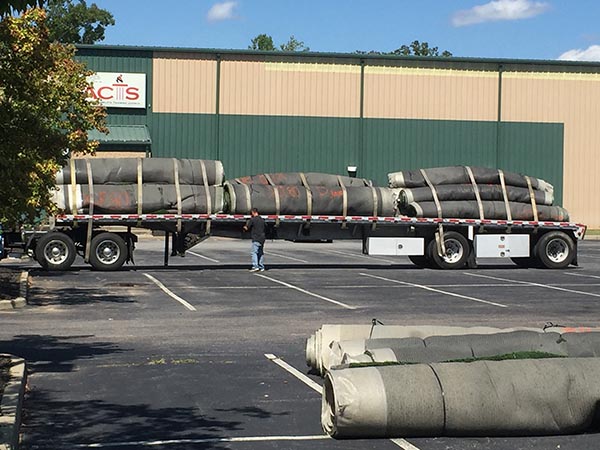
Used artificial grass typically comes from sports fields or other commercial uses, where high-quality turf is replaced at regular intervals. After being carefully removed, the turf is cleaned and refurbished to ensure it meets new usage requirements. Then, it’s simply installed in a new location, serving a second life in a new setting.
As you can see, in most cases, used artificial grass will ultimately suit the same purposes of those searching for “recycled” artificial grass—it’s mostly a semantic difference. While it’s not technically “recycled” in the sense of being broken down and transformed into a new product, it’s effectively reused or “recycled” in the broader sense of resource efficiency.
It provides a greener alternative to new turf, makes use of a product that might otherwise go to waste, and often comes at a lower cost. Both options contribute positively to environmental sustainability by promoting a circular economy, reducing waste, and lessening the demand for new raw materials.
Benefits of Re-using Artificial Grass
Re-using artificial grass offers a host of advantages. It reduces waste by giving the used turf a new lease of life, and it can be considerably less expensive than purchasing new turf. Because used turf typically originates from sports fields or similar facilities where high-quality turf is used (and routinely replaced due to high usage rates and safety standards), it has a very long lifespan. So once the turf’s lifecycle in these demanding environments reaches its end, it doesn’t necessarily mean the turf is no longer functional. After it has been professionally refurbished and revitalized, the turf can look and perform virtually as good as new for years to come.
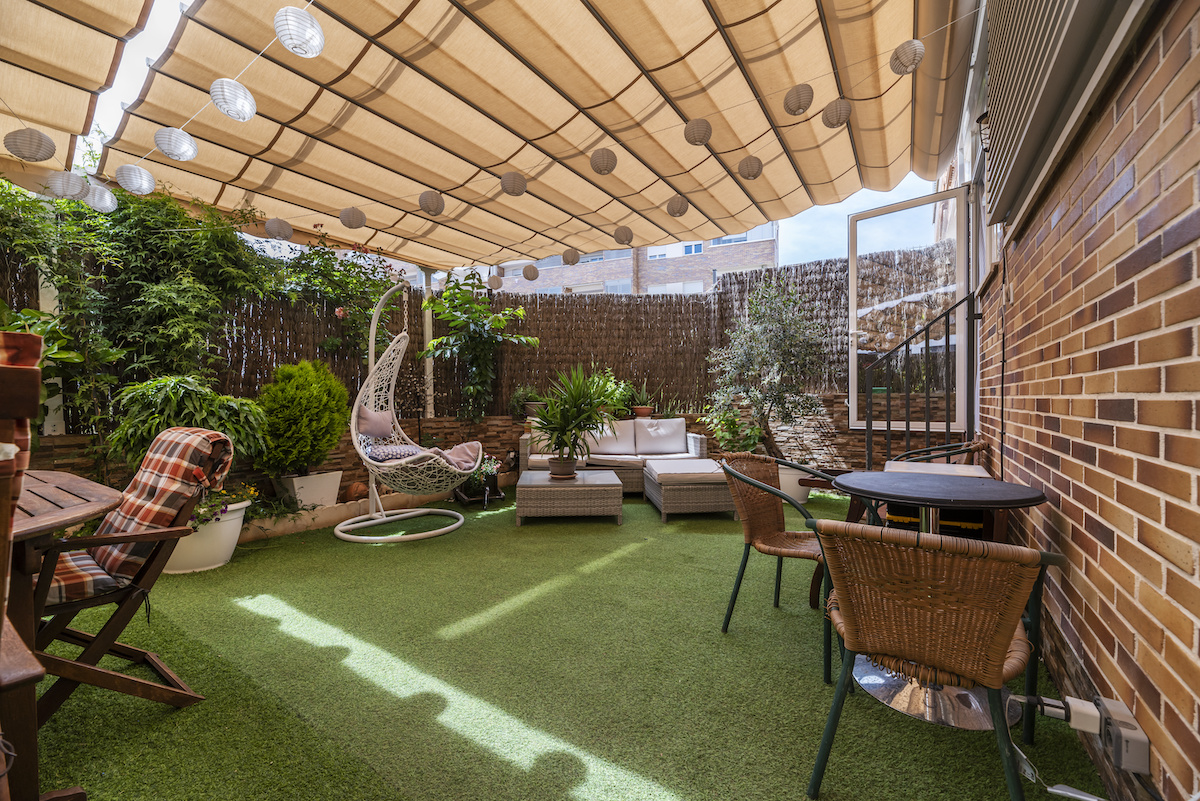
However, it’s important to consider that used turf isn’t necessarily “just” turf that has been used. It can actually have different characteristics from new turf, which can make it preferable for certain applications. (Such as having a more natural appearance without requiring lots of infill and brushing.)
Is there Recyclable Artificial Grass?
Yes. While most artificial grass has traditionally been difficult to recycle due to the variety of materials involved, innovations are being made in the industry. One example is Tempo Turf, a product that has been engineered with recyclability in mind.
Tempo Turf distinguishes itself by being composed entirely of olefin, a type of plastic, across all its layers. This uniformity of materials eliminates much of the costly and labor-intensive separation process that hampers conventional artificial grass recycling.
At the end of its useful life, Tempo Turf can be collected and easily processed back into raw materials. This circular model is an example of sustainable product design, reducing waste and demand for new raw materials.
While currently Tempo Turf is an exception in the industry, its advent indicates a promising shift towards more environmentally-friendly options in the world of artificial grass. As technology and manufacturing processes continue to advance, we can expect more developments in this direction
Note: ReTurf is the sole online retailer for Tempo Turf products. You can purchase them here.
Takeaways
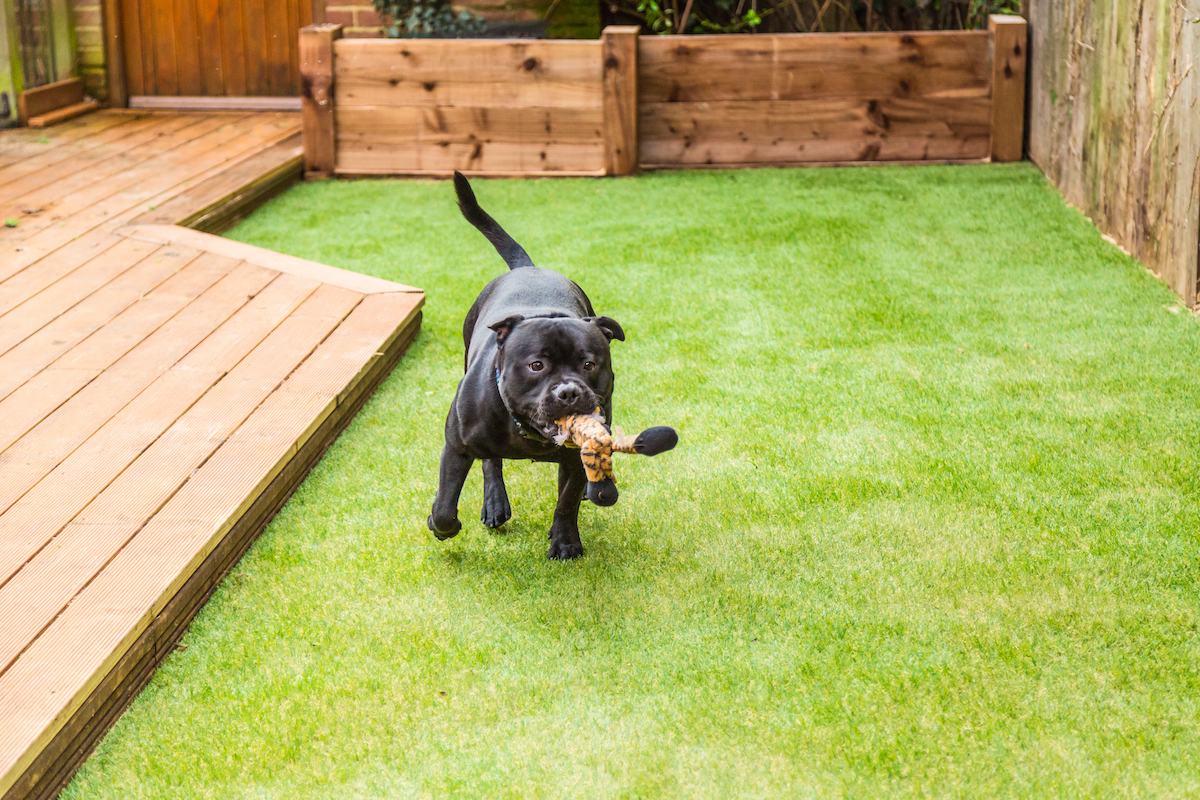
There’s often confusion between the terms “recycled artificial grass” and “used artificial grass,” with many people using them interchangeably. While both recycled and reused turf have their merits and are environmentally-friendly in their own ways, they represent two distinct processes.
- When people are looking for used turf, they often refer to it as recycled turf. Recycling involves breaking down and reusing material components, and repurposing or reusing involves reusing turf as it is in a new location or for a different purpose.
- Challenges of Recycling Turf: Given the multi-layered structure and the variety of materials involved, recycling artificial grass—breaking it down into its base materials for reuse—is a complex and costly process. Separating these components is difficult, especially when they’ve been fused together with adhesives and mixed with outdoor contaminants. Tempo turf is a 100% recyclable type of artificial grass.
- Used Artificial Grass: Repurposing involves using the turf in a new location or for a different purpose without undergoing the recycling process. The turf, typically from sports fields or other commercial uses, is carefully removed, cleaned, refurbished, and installed in a new setting. This process gives used turf a new life, reducing waste and promoting resource efficiency.
- Benefits of Repurposing: Besides being environmentally friendly, repurposed artificial grass provides a greener alternative to new turf, makes efficient use of a product that might otherwise go to waste, and can be much more cost-effective.
Understanding the meanings of these terms will help you in making informed choices regarding the used artificial grass.

